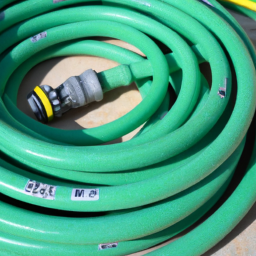Garden Hose GPH How Many
Table of Contents []
How Many Gph Is A Garden Hose
Introduction
Learning about the capability of your garden hose can be helpful for a variety of reasons. Keeping your landscape alive and healthy is possible with the right information. This article will cover popular topics and subtopics to help you better understand how many gallons of water per hour a garden hose can deliver.
Gallons per Hour
The first main topic to focus on is how many gallons of water per hour a garden hose can deliver. This is an important metric to consider when watering your garden, as it'll help you understand how much water your plants need and how quickly you need to water. To get an accurate answer for your particular garden hose, you'll need to factor in the lenghth of the hose, the diameter, and the pressure at which the water is released. Depending on these factors, the amount of GPH (gallons per hour) can vary greatly.
Popular Subtopics
To better understand this question, we'll cover the popular subtopics of water pressure, hose diameter, and hose length. We'll also look a bit more into the actual math behind calculating GPH.
Water Pressure
The biggest contributor to how many gallons of water per hour a garden hose can deliver is water pressure. Water pressure varies between different homes and locations, and can be impacted by the type of plumbing and fixtures you have. While the typical home has 40 to 70 Pascals (which is a measurement of pressure), different areas can have higher or lower pressure than this. To get an accurate reading on GPH, it's worth checking what your water pressure is.
Hose Diameter
Hose diameter is also important to consider when calculating GPH. Garden hoses typically come in , 5/8, and inch diameters, with the larger the diameter, the greater the flow of water. Hoses with a larger diameter can pump more water, but they can also look bulky and take up more space.
Hose Length
Another factor to consider when calculating GPH is the length of your garden hose. Shorter hoses can deliver more gallons of water per hour than longer ones, as more water pressure is lost when water is pumped over larger distances. When looking at GPH, it's important to factor in the length of the garden hose.
The Math
Now that we've discussed the popular subtopics of water pressure, hose diameter, and hose length, we'll look into the actual math behind calculating GPH. To do this, you'll need to multiply the water pressure (in Pascals) by the hose diameter (in inches) and the hose length (in meters). By doing this, you can get an accurate estimate of how many gallons of water per hour your particular garden hose can deliver.
Summary
Overall, calculating how many gallons of water per hour a garden hose can deliver can be done by factoring in water pressure, hose diameter, and hose length. By doing this, you can get an estimate of how much water your plants can be given. Make sure to keep an eye on your garden to ensure it's getting enough water to thrive!

Previous Page
Next Page
